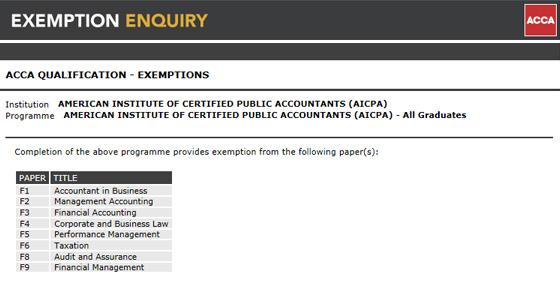
Account reconciliations should be performed regularly, ideally monthly, to ensure financial records are accurate and up-to-date. Such regular and timely reconciliations support financial integrity and informed decision-making. Account reconciliation is typically carried out at the end of an accounting period, such as monthly close, to ensure that all transactions have been accurately recorded and the closing statements are correct. If the account reconciliation reveals that an account balance is not correct, adjust the account balance to match the supporting detail. Also, always retain the reconciliation detail for each account, not only as proof, but also so that it can be used as the starting point for account reconciliations in subsequent periods.
This helps ensure that the company pays vendors and suppliers accurately and on time. Reconciliations are usually performed at the end of an accounting period, such as during the month-end close process, to tax deductions guide 20 popular breaks in 2021 ensure that all transactions are correctly verified and the closing statements are accurate. In single-entry bookkeeping, every transaction is recorded just once rather than twice, as in double-entry bookkeeping, as either income or an expense. Single-entry bookkeeping is less complicated than double-entry and may be adequate for smaller businesses. Companies with single-entry bookkeeping systems can perform a form of reconciliation by comparing invoices, receipts, and other documentation against the entries in their books. Some reconciliations are necessary to ensure that cash inflows and outflows concur between the income statement, balance sheet, and cash flow statement.
And while most financial institutions do not hold you responsible for fraudulent activity on your account, you may never know about that fraudulent activity if you don’t reconcile those accounts. Regular account reconciliation should be combined with invoice reconciliation as part of your internal controls in accounts payable. Keeping your accounts reconciled is the best way to make sure that your balances are accurate and an important part of ensuring adequate financial controls are in place. While the reconciliation process remains the same, with two sets of documents compared for accuracy, the difference lies in what is being reconciled.

Reconciling the accounts is a particularly important activity for businesses and individuals because it is an opportunity to check for fraudulent activity and to prevent financial statement errors. Reconciliation is typically done at regular intervals, such as monthly or quarterly, as part of normal accounting procedures. For example, when performing bank reconciliation, a business compares its financial statements with the records received from the bank. This helps identify timing delays in deposits, payments, fees, and interest that may have been recorded by one entity but not the other.
Reconciling Account
While very small businesses can use cash basis accounting, if you have employees or have depreciable assets, you’ll need to use accrual basis accounting. This one doesn’t have to be a comparative trial balance, because you’re only interested in checking the new balances after all your journal entries have been completed. Adding the two columns, the bank reconciliation form now displays your reconciled balance of $12,360. Accuracy and completeness are the two most important things when reconciling accounts, and these are what accounts for effective and proper account reconciliation. Additionally, reconciling accounts on time consistently is also essential to maintaining financial what does encumbered mean in accounting integrity. While scrutinizing the records, the company finds that the rental expenses for its premises were double-charged.
Inventory reconciliation
Using accounting software will make it much easier to reconcile your balance sheet accounts regularly. Learn which general ledger accounts should be reconciled regularly, and key things to look for during the account reconciliation process. In the event that something doesn’t match, you should follow a couple of different steps. First, there are some obvious reasons why there might be discrepancies in your account. If you’ve written a check to a vendor and reduced your account balance in your internal systems accordingly, your bank might show a higher balance until the check hits your account.
Reasons To Reconcile Bank Statements
- Secondly, account reconciliation helps identify fraudulent activity committed by employees, dishonest customers, vendors, suppliers, or cyber-thieves.
- If the indirect method is used, the cash flow from the operations section is already presented as a reconciliation of the three financial statements.
- This ensures that all transactions are recorded accurately and any discrepancies are identified and corrected.
- For example, while performing an account reconciliation for a cash account, it may be noted that the general ledger balance is $500,000.
Whether it’s reconciling bank statements, vendor accounts, or intercompany transactions, each type plays a pivotal role in ensuring that records are consistent and errors are promptly identified and corrected. Reconciling credit cards involves comparing purchase receipts with credit card statements provided by the card company. This helps to ensure that all credit card transactions have been accurately recorded in the business’s financial records.
Account reconciliation is a critical financial process that ensures the accuracy and consistency of an organization’s financial records. By comparing internal financial statements with external sources, such as bank statements, businesses can identify discrepancies, correct errors, and maintain financial integrity. This type of reconciliation involves comparing the cash account balances in your company’s general ledger to the balances in your bank statements.
Account reconciliation is done to ensure that account balances are correct at the end of an accounting period. The account reconciliation process also helps to identify any outstanding items that need to be taken into consideration in the reconciliation process. For small businesses, the account reconciliation process helps identify potential misstatements and ensures the accuracy of financial statements. Accountants typically perform an account reconciliation for all their asset, liability, and equity accounts. This process involves reconciling credit card transactions, accounts payable, accounts receivable, payroll, fixed assets, and subscriptions to ensure that all are properly accounted for words that rhyme with true and balanced. Bank reconciliations involve comparing the business’s financial statements with the statements it receives from the bank.
